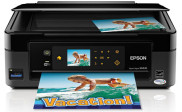How to Become a Freelance Photographer
All of your friends keep praising the photos you take and they think that you have some real talent in photography. You have been a devoted amateur for a long time and you know everything about the technicalities of photography. All of this may lead you to decide to pursue a career in photography. But, to become a freelance photographer you need more than your talent in getting great shots. Actually, that’s the easy part.
Reality is less amusing. You will have to be, not only a creative and talented artist, but also, you need to have great marketing and communication skills.
This article will present you with some steps that can help you in launching your photography business.
The early stage:
Starting out in the photography field requires some qualities. You will need courage, patience, and perseverance.
In order to succeed you will have to be talented and energetic, and of course you must be in love with photography and 100% convinced that it’s the career you want to follow.
Initially, try to meet with as much people related to the field as possible. It’s not necessary to choose a specialty at an early stage. It’s better to explore the different possibilities ahead of you. Get training, join photo clubs, participate in photography events, etc. This will help you determine what you want to do and to see the different perspectives you can follow. After that, it’s crucial to specialize in an area which you enjoy. You have many options to choose from, such as wedding photography, fashion photography, product photography, food photography, advertising photography, portraits…

Photo by HotDuckZ
Equipment:
Being a professional, you are bound to provide only the best quality photos or you run the risk of losing your reputation and potential jobs. For this, you need to acquire the best equipment you can afford. The equipment you will need depends on the kind of photography you are willing to do. For instance, you can start doing product photography with simple lights and a homemade light tent, but you will need a more sophisticated light kit if you aim to delve into studio portrait photography. Generally, to start in any kind of photography, professionally, the least you will need is an SLR camera, at least one lens, and a tripod. Then you can upgrade your gear as your business grows and prospers.
Get Some Experience:
Once you have chosen the specialty you want to follow, you need to master it. People won’t hire you if they don’t know what you can do. That’s why you need to get experience. This will help you in perfecting your technique, finding a style of your own and building a portfolio which will be the next stage.
Shoot as much as possible and learn everything about your area of expertise. For example, if your area of specialty is concert photography, try to attend and shoot every concert you can. Then you can send samples of photos to the organizers. By this approach, you will create a circle of acquaintances and potential clients. You can also work as an assistant to a photographer. You can learn from him/her the craft as well as how to run a business.
Build a Portfolio:
The amount of work that you have done in the previous stages will leave you with a great variety of photos, from which you can begin building your portfolio. Portfolios are an important step to get photography jobs. They showcase the best of your work and will most likely determine whether you will be hired or not. Thus a special care should be given into building a portfolio. Your portfolio must let your potential client know your work in a very limited time. Most people don’t take more than 5 minutes to decide whether they like your work or not. Thus your portfolio must grab your client’s attention from the moment he/she lays eyes on it. In order to guarantee the efficiency of your portfolio in grabbing the viewer’s attention there are some tips that you need to follow.
Make sure that the portfolio is made of a set of images that is coherent. Provide your client with a portfolio that is too vague and you will lose him/her. Also, don’t try to fit every photo that you took in the last 4 or 5 years in the portfolio. Only include your best work. The portfolio shouldn’t show your progress over the years, but rather a coherent and constant style. You can always leave a tiny part to showcase some work that is different from the rest of the set.
Another thing to consider is to prepare a different portfolio for different kinds of clients. The portfolio is like your CV and it should be adapted to the client you are going to meet. Finally, don’t forget to make your portfolio available through different media. Along with a hardcopy portfolio consider building an online one.
Go Get Them:
Work won’t come to find you. You have to go look for it yourself. Show your work to as many people as possible. But don’t expect clients to come to you, especially if you are starting out. You will have to go to potential clients and present them with your portfolio and with what you can offer them. This is where some knowledge of marketing and communication can come in handy. When meeting a potential client, be yourself and don’t try to impress him/her. Let your photos do the talk for you. Also, you need to be self confident and to know exactly what you can offer. That way, you will be able to answer any questions the client might have which will establish an atmosphere of trust.
To Sum Up:
In the last few years the photography market has been very dynamic and competitive. In order to be able to subsist, the freelance photographer will need to have great talent within his area of predilection. But he/she will have to master a set of other skills, such as negotiating a contract, management, marketing and communication. The freelance photographer is an entrepreneur as much as he/she is an artist. You don’t need a university diploma to launch into business. But a well thought portfolio will be your greatest asset. It’s only your previous work that will get you more work. Also, don’t hesitate to participate in contests, exhibits and to join groups and collectives.



